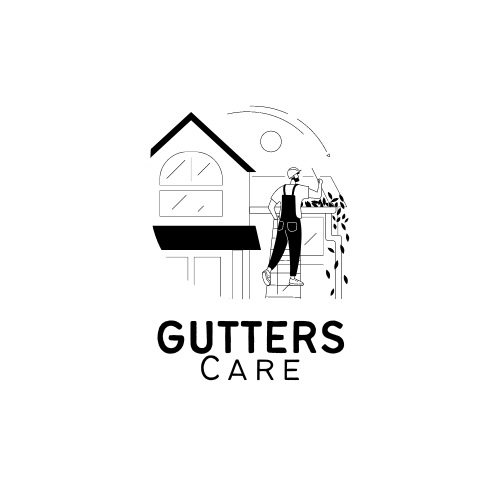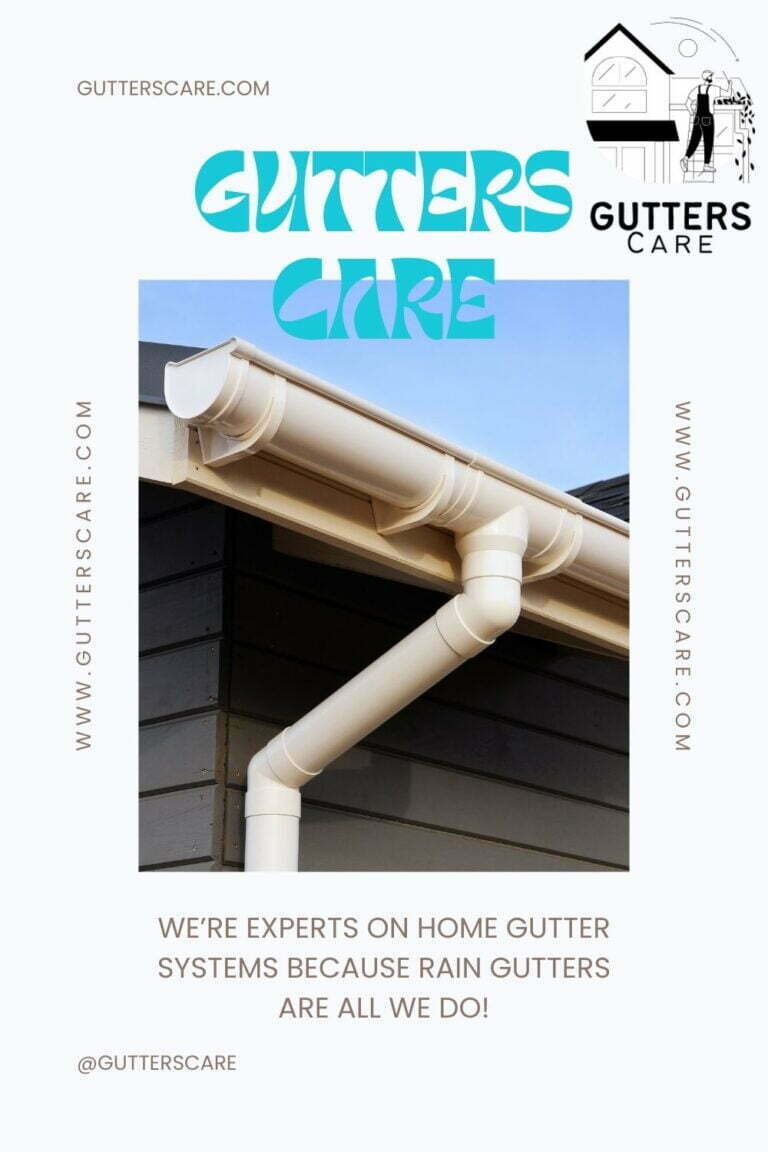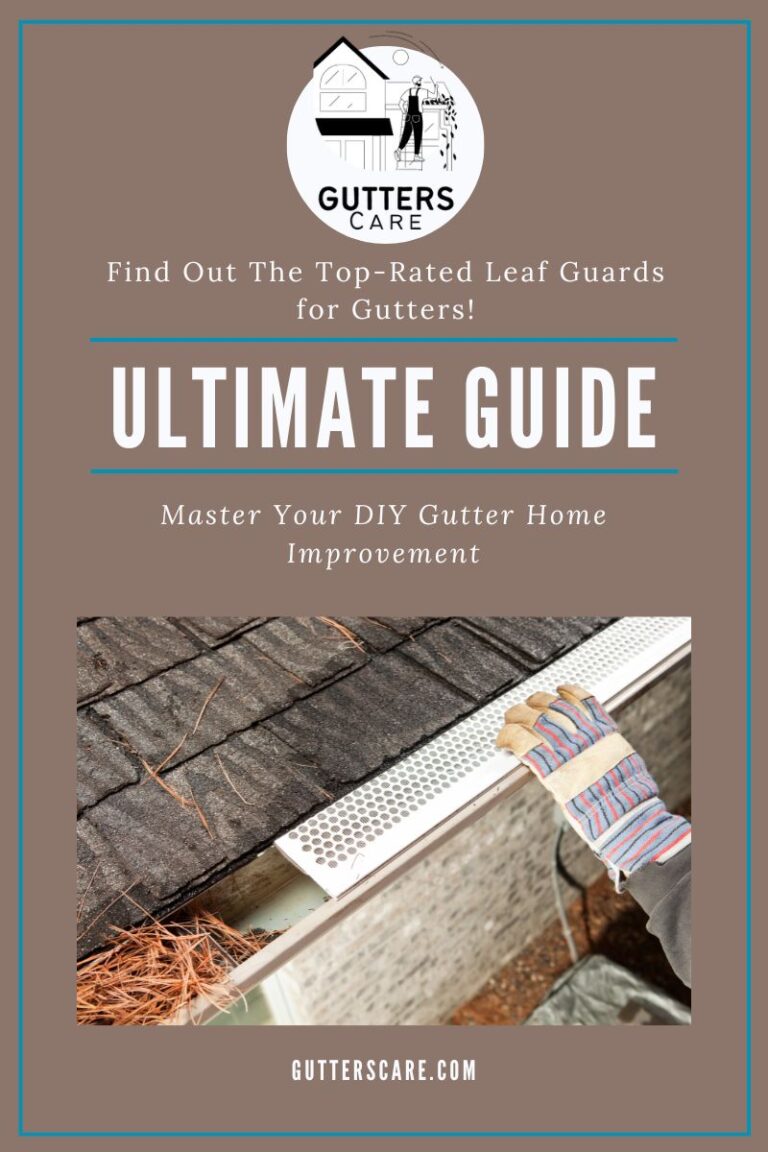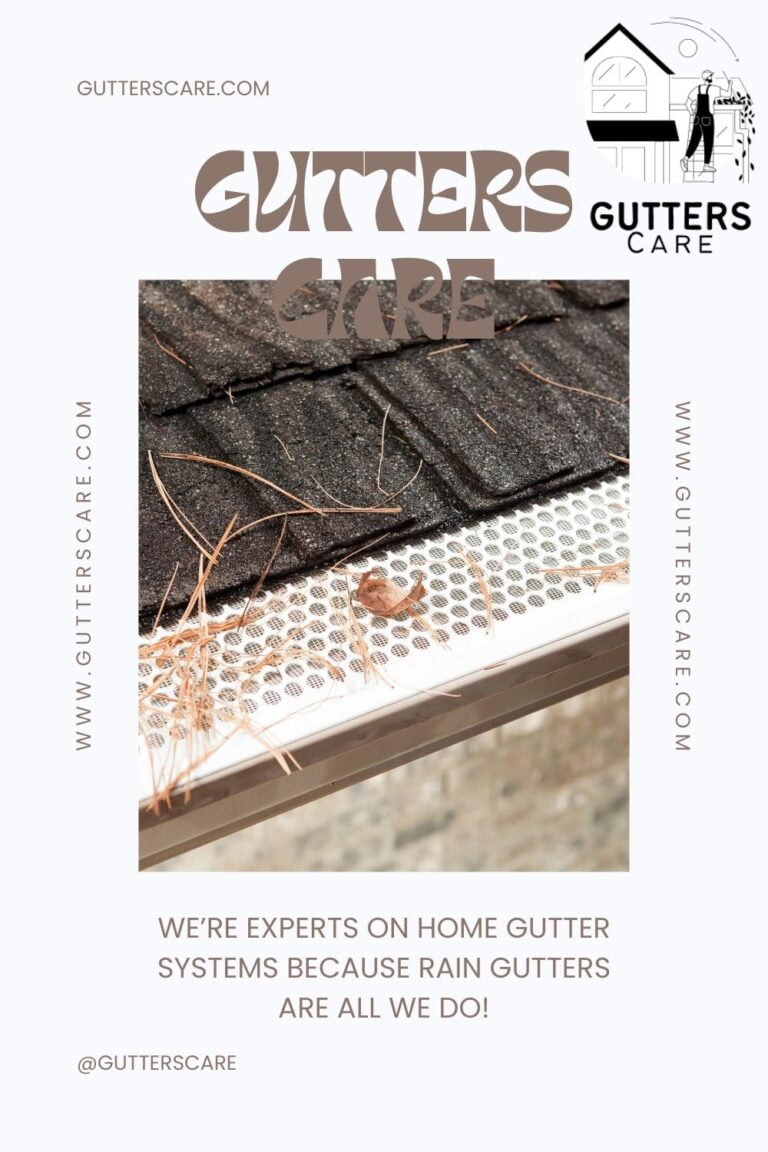The Best Gutter Guards Tested in 2023
The Tested Best Gutter Guards
With one of these great gutter guards, you can stop leaves and other debris from clogging your gutters and preventing rainwater from draining away from your home properly.
Cleaning the gutters that run along a roof is a nasty task, but it’s essential to maintain a clear stormwater drainage system.
Leaves, twigs, pine needles, and other waste that is breaking down can clog gutters and put the foundation’s plants and the building itself in danger.
Luckily, rain gutter guards that are easy to set up keep debris from clogging up a gutter system that is already in place.
We looked at a lot of these products in different categories to figure out how well they worked on a variety of levels.
Learn more about gutter protection and our tried-and-true picks for the top gutter guards in the following paragraphs.
1. Raptor Gutter Guard Stainless Steel Micro-Mesh is the best product overall.
2. The Frost King Plastic Mesh Gutter Guard is the best value for the money.
3. GutterBrush Gutter Guard, THE BEST BRUSH
4. BEST HEAVY-DUTY: FlexxPoint 30 Year Gutter Cover System, 5-Inch Guards
5. LESS NOTICEABLE: A-M Gutter Guard 5-Inch Aluminum Gutter Guard
6. Amerimax Home Products 636025 Lock-In Gutter Guard is the most straightforward to install.
How the Best Gutter Guards Passed Our Tests
Because we only wanted to recommend the best gutter guards on the market, our hands-on testers set up, tested, and took down each device to make sure we knew exactly how each one worked.
First, we followed the directions and put one part of each gutter guard in place. If brackets needed to be cut, we did so.
We evaluated the installation’s adaptability (no two sets of gutters are the same), the hardware’s quality, and how challenging it was to install each item.
Most of the time, installation doesn’t need to be done by a professional and can be done by the average do-it-yourselfer. To assess visibility, we looked at the gutter guards from the ground.
When there wasn’t much debris falling naturally because of the relative calm in our location at the time and the fact that we had left the gutter guards to collect debris, we took matters into our own hands.
We scooped mulch onto the roof above the gutters to represent twigs, tree mud, and other detritus. After hosing down the roof, we could then tell for sure how well the gutters caught the trash.
We took the gutter guards off so that we could get to the gutters and see how well they kept debris out. We cleaned the gutter guards in order to assess how simple it was to get rid of any sticking material.
Our Favorite Gutters Guards
Choose one of the following solutions, each of which is the best gutter guard in its category, and you’ll no longer have to clean your gutters every six months.
Each product was set up and put through its paces with practical testing, which demonstrated that it was a high performer.
Examine your options for new gutters while keeping the most important factors in mind.
1. Raptor Gutter Guard Stainless Steel Micro-Mesh
Even the smallest wind-blown seeds are kept out of gutters by this stainless steel gutter guard, which has a delicate but strong mesh. The resilient micro-mesh cover can be slid underneath the bottom row of roof tiles, and for added protection, the outside edge is screwed to the gutter.
Raptor’s V-Bend technology makes the mesh stiffer and increases its ability to filter. This means that it can handle particles without sagging.
The 48-foot Raptor gutter cover is available in 48-foot long, easily handleable 5-foot strips, and it fits regular 5-inch gutters. The strips come with the screws and nutdriver socket needed for installation.
The Raptor system proved to be a dependable solution for DIY gutter guard installation, and we appreciated that it offered a variety of installation options, such as placing under the roof shingles or straight across the gutter, depending on the situation.
Even with a good pair of snips, we had a hard time cutting the stainless steel material, which is a clear sign of how strong it is. Everything that might be expected was caught by the stainless steel mesh, which is very simple to remove for gutter cleaning.
Product Specifics:
- Micro-mesh fashion
- Aluminum and stainless steel are the materials.
- Visible: Depends on the installation technique.
Pros
- Sturdy mesh made of stainless steel.
- Various gutter guard types can be mounted in a variety of ways.
- Simple to take apart for cleaning.
Cons
- Quite challenging to cut, even with sharp scissors.
>> View on Amazon <<
2. Frost King Plastic Mesh Gutter Guard
This Frost King gutter guard by Thermwell is a cost-effective plastic alternative for individuals who would rather not spend the money on an expensive stainless steel device. It protects the gutter system from huge debris and unwelcome animals like mice and birds. The 6-inch by 20-foot roll of plastic screen gutter guard may be cut with regular scissors to fit the gutter precisely.
Without the use of screws, tacks, nails, or any other fasteners, the gutter guard is simple to install. Just put the guard in the gutter and make sure its middle bends up toward the entrance so it doesn’t make a trough where debris could gather. The plastic material protects the gutters all year long because it doesn’t rust or corrode and can handle changes in temperature pretty well.
Testing revealed that the reasonably priced Frost King system was a respectable choice. The plastic is so lightweight that we had no worries about lugging the screen up a ladder. The screen was simple to cut to 4- and 5-foot lengths while on the ground (which can be a challenge with heavier materials).
However, because they don’t use hardware to hold them in place, we discovered that these gutter guards can be a little tricky to install effectively.
Product Specifics
- Screen Style
- Plastic Material
- Visibility: Generally speaking, yes
Pros
- simple to cut or modify as necessary.
- It is quite inexpensive in comparison to other possibilities.
- Lightweight construction is simple to transport or modify.
Cons
- Installation is tricky.
>> Get the Frost King gutter guard <<
3. GutterBrush Gutter Guard
The flexible stainless steel wire core of this brush gutter guard can curve over bends. The complete gutter guard can fit comfortably into standard-size (5-inch) gutters thanks to the brush’s UV-resistant polypropylene bristles, which stretch outward roughly 4.5 inches from the core.
The gutter cover comes in lengths from 6 to 120 feet, and it’s easy to put in place without fasteners: Just put the guard into the gutter and press down gently until it is at the bottom of the gutter. The bristles prevent leaves, sticks, and other large material from entering the gutter and blocking the drainage system while allowing water to flow freely through the gutter.
During testing, it was found that the best thing about the GutterBrush gutter-guard system was how easy it was to set up.
This gutter guard is the most versatile of all the ones we tested because the mechanism works for both brackets put on the fascia and those fixed to the shingles. They permit a good deal of water flow, but we discovered that larger particles can cause them to clog. Even though large pieces are simple to remove, we discovered that the GutterBrush requires some upkeep.
Product Specifics
- Design: Brush
- nylon bristles as a material
- No visibility
Pros
- extremely simple to install
- universal fit for several types of gutters
- enables abundant water flow
Cons
- will eventually clog
On Amazon, purchase the GutterBrush gutter protector.
4. FlexxPoint 30 Year Gutter Cover System, 5-Inch Guards
Even with a lot of leaves or snow accumulating, the FlexxPoint Gutter Cover System provides additional protection against drooping and collapse.
It has ridges running the length of the strip that serve as reinforcement, and it is made of lightweight, rust-proof aluminum. From the ground, the screen gutter guard’s modest design is imperceptible.
This strong gutter guard is attached to the gutter’s outer edge with the screws that come with it. There is no need to tuck it under the tiles because it snaps into place. It is offered in 22-, 102-, 125-, 200-, and 204-foot lengths and is available in black, white, brown, and matte.
In testing, the FlexxPoint Gutter Cover System stood out because of specific characteristics. It was the only design that required screws on both the front and back of the gutter. This makes it very sturdy and solid; under no circumstances will it come out on its own.
Although it is incredibly resilient, cutting through it is not difficult. An enormous benefit of a heavy-duty guard is that it cannot be seen from the ground. We found that it collects bigger pieces of trash, which have to be taken out by hand (but it’s not hard).
Product Specifics
- Design: Screen
- Aluminum and stainless steel are the materials.
- No visibility
Pros:
- The construction is extremely robust and resists weather and abrasions.
- Super-secure installation technology that is undetectable from above
Cons:
- It might clog and need treatment.
Amazon has the FlexxPoint gutter guard for sale.
5. A-M Gutter Guard 5-Inch Aluminum Gutter Guard
The A-M Gutter Guard Aluminum Gutter Guard is an option for people who don’t want gutter guards to be visible from below. The perforated panel, which is made of industrial-grade aluminum and has 380 holes per linear foot, can withstand significant downpours. Nothing will take away from the look of a roof because it fits snugly in the top of the gutter and is almost impossible to see once it’s in place.
The guard attaches to the outside lip of the gutter with screws that don’t need to be tightened. It also has tabs that slip under the roof shingles and help keep them in place.
It is available in lengths of 23, 50, 100, and 200 feet and is intended for 5-inch gutters. Additionally, this item is offered for 6-inch gutters in lengths of 23, 50, and 200 feet.
During testing, we came to have mixed feelings about the A-M Gutter Guard system.
They can’t be seen from the ground, but these aluminum gutter guards are a high-quality system with sturdy reinforcement ridges along the length of the guard.
It does an excellent job of enabling water flow and collecting trash, and it’s simple to cut and install, even around brackets. But it’s missing the essential self-tapping screws!
They were a part of all the other systems that needed fasteners. Additionally, this system will ultimately become clogged with larger particles, necessitating minor maintenance.
Product Specifics
- Type: Screen
- Material: Aluminum
- No visibility
Pros
- Simple to cut or modify as necessary
- inconspicuous ridges of strong reinforcing
Cons
- May become blocked by larger debris
- No screws are provided.
Amazon sells the A-M gutter guard.
6. Amerimax Home Products 636025 Lock-In Gutter Guard
The Lock-In Gutter Guard from Amerimax Home Products makes installing gutter guards simple, even for DIY beginners.
This screen-style gutter guard is made to slide under the first row of shingles before it snaps over the gutter’s edge. Its adaptable design accepts gutter systems with a 4-, 5-, and 6-inch diameter.
The gutter guard from Amerimax Home Products is made of powder-coated steel, which resists rust, and will keep leaves and other debris out while allowing even the heaviest downpour to pass through. It comes in three-foot strips that are easy to handle and install.
Since the hardware-free installation was so secure and worked so well in testing, it was somewhat difficult to take the gutter guard off by hand.
We liked the flexible mounting option because we couldn’t get the screen under our shingles and had to place it across the top of the gutter.
The screen was simple to cut. Debris was effectively kept out, but smaller pieces nevertheless found their way in. The cut mesh hung up on the brackets, which was the only major challenge in removing the guard.
Product Specifics:
- Fashion: Mesh
- steel with a powder coating.
- Possibilities for visibility
Pros:
- possibilities for flexible installation
- Locking mechanisms are effective.
- Simple to cut or alter as necessary
Cons:
- It can be difficult to install around brackets.
- Removing it can be challenging.
Purchase the Amerimax Home Products gutter guard on Amazon (packs of 25). (individual packs).
A Review of the Best Gutter Guards
- Raptor Gutter Guard Stainless Steel Micro-Mesh is the best overall.
- Frost King Plastic Mesh Gutter Guard is the best value.
- GutterBrush Gutter Guard is the BEST BRUSH.
- FlexxPoint 30 Year Gutter Cover System, 5-Inch Guards are the BEST HEAVY-DUTY.
- A-M Gutter Guard 5-Inch Aluminum Gutter Guard is the least noticeable.
- Amerimax Home Products 636025 Lock-In Gutter Guard is the easiest to install.
Gutter Guard Types
Screen, micromesh, reverse curve (or surface-tension gutter guards), brush, and foam are the five most common varieties of gutter guards on the market. Each type has a unique set of benefits and factors to take into account.
Screen
A plastic or wire grid on the screen protector keeps leaves from falling into the gutter trough. The gutter screens are simple to install; simply lift the bottom row of roof shingles and slide the gutter screen edges along the length of the gutter beneath the shingles; the weight of the shingles holds the screen in place. Screen gutter guards are the cheapest and easiest to put up. Often, you don’t even need any tools.
Since gutter screens are not fastened to the roof with screws, they could be blown out by strong winds or pushed out from under shingles by falling trees.
Also, removing the bottom row of roof shingles to install slip-under gutter guards will void several roof warranties.
Before installing this style of gutter guard, buyers may wish to get in touch with the shingle manufacturer if they have any questions.
Nano Mesh
Steel micro-mesh gutter guards work like screens by letting water pass through tiny openings while obstructing branches, pine needles, and other debris.
You can install them in one of three easy ways: slip the edge under the first row of roof tiles, snap the guard onto the top of the gutter, or attach a flange to the fascia, which is the vertical strip just above the top of the gutter.
Even tiny pieces of waste, like flying sand, can be effectively blocked by micro-mesh gutter guards while still allowing rain to pass through. They come in a variety of materials, from sturdy stainless steel gutter guards to affordable plastic gutter guards. Even the best mesh gutter guards may occasionally need to be cleaned with a hose sprayer and scrub brush to remove ultrafine dirt from the mesh openings, unlike other gutter guards.
Backward Curve
Lightweight metal or plastic that’s been molded is used to create reverse-curve gutter guards. Before entering the gutter below, water passes over the top and then curves downward. Straight off the edge, leaves and other debris fall to the ground below. Even in yards with plenty of trees, these gutter guards do a good job of keeping leaves and other debris out of the gutter.
Gutter guards with a reverse curve are more expensive than mesh and screen alternatives. They are harder to put up yourself than other gutter guards because they have to be attached to the fascia of the roof at the right angle.
Water may spill over the edge and not flow into the gutter along the reverse curve if the installation is not done correctly. Because these guards attach to the existing guttering and can look like full gutter covers from the ground, it’s best to choose a product that matches the color and style of the house.
Brush
Heavy pipe cleaners that rest inside the gutter, known as “brush-style gutter guards,” prevent large objects from falling into the gutter and clogging it up. Cut the brush to the appropriate length, then simply shimmy it into the gutter. DIYers who want to save money often choose brush-style gutter guards because they are easy to install and inexpensive.
This type of gutter guard is usually made with a thick metal wire core and polypropylene bristles that grow out from it. The flexible metal wire core of the guards allows them to be bent to fit around corners or strangely shaped stormwater drainage systems.
The guards don’t need screws or other connections to the rain gutters. These features make it easier for people who don’t want to hire a professional to install these gutter guards on their own.
Foam
Another simple solution is a triangular foam block that rests in the gutter. To keep debris out of the gutter, one flat side faces the back of it, and the other flat side faces the top. The third flat side, which is diagonally in the gutter, lets water and small things flow through the drainage system.
Foam gutter guards are a great choice for do-it-yourselfers because they are cheap and easy to put up. There is less chance of damage or leakage because the foam may be cut to the right length and the guards don’t need nails or screws to stay in place.
They aren’t ideal for areas with a lot of precipitation, either, as heavy rain can quickly saturate the foam, resulting in gutter overflow.
Things to Take Into Account When Selecting the Best Gutter Guards
There are a few other things to think about besides choosing the best gutter guards for your home. These factors include installation, material, size, and visibility.
Material
Depending on the kind and caliber of the product, gutter guard materials can change.
Gutter guards with micro-mesh, screens, and reverse curves are frequently made of stainless steel. Although generally more expensive, it is one of the alternatives that is most resilient. Because stainless steel is resistant to rust, corrosion, and temperature changes, the gutter guards won’t get bigger, bend, or break.
Gutter guards made of copper screen and micro-mesh have a high level of corrosion and rust resistance. Copper gutter guards can be hard to locate since so few manufacturers make them, despite the fact that they are typically more durable (and more expensive) than any other variety.
Lightweight micro-mesh and screen gutter guards are made of aluminum, a relatively inexpensive metal. Even though they don’t last as long as options made of stainless steel or copper, they are better for homes without tree branches that hang over the roof. This is because branches, twigs, pine needles, or other hard objects are less likely to pierce the guard.
The frame of gutter guards, including reverse-curve and brush guards, is frequently made of plastic. But the bristles of a brush are often made of polypropylene, while the core of a brush guard is usually made of aluminum or stainless steel. Even though plastic is cheap and doesn’t rust or corrode, it tends to swell and break.
The only component of foam gutter guards is foam. The guard is mostly just a block of foam that keeps heavy trash from falling into the gutter while letting water flow through. Although foam is a cheap and sturdy material, mold can grow on it.
Size
When it’s time to put up gutter guards, you have to climb a safe ladder to measure the width of the gutter so you can choose the right size. The length of each gutter must also be known in order to figure out how many and what size gutter guards are needed to protect the whole gutter system.
Most gutter guards are available in lengths between 3 and 8 feet. Guards are available in three basic widths: 4 inches, 5 inches, and 6 inches, with 5 inches being the most popular. Gutters are available in these dimensions. Measure the width of the top of the gutter from the inside edge to the outside edge to get the right-sized guard.
Visibility
Depending on the type of gutter guard used, the side or even the top may be visible from the ground. It’s best to choose a guard that makes the house look better or fits in with the way it looks now. Foam and brush gutter guards are almost impossible to see from the ground because they completely cover the gutter. On the other hand, micro-mesh, screen, and reverse-curve gutter guards are more obvious.
Guards often come in white, black, and silver, which are the three common hues. To help customers locate gutter guards that fit their gutters, certain items come in extra color choices. It’s also a good idea to match the gutter guards to the color of the roof to create a unified, appealing appearance.
DIY vs. Professional Installation
Any installation that extends beyond a first-story roof should be handled by a professional. This is a relatively safe and easy job that just needs the most basic tools for one-story homes.
As long as safety precautions are taken, anyone who knows what they’re doing, has a good ladder, and has worked at heights before should be able to put gutter guards on their own two-story house. Never climb a ladder to the roof alone; always have a spotter. To avoid severe injuries, make sure a proper fall-safety system is in place.
The Benefits of Utilizing Gutter Guards
The main benefit of using gutter guards to protect the storm water drainage system is that they keep debris out. Large things like leaves, branches, feathers, and other things can quickly get stuck in gutters and stop water from draining properly. Once made, these clogs keep getting bigger as more mud sticks to them, filling any holes and sometimes attracting bugs.
Rodents and bugs are drawn to wet, dirty gutters, where they may build nests or use the closeness of the house to start tunneling into the roof and walls. Installing gutter guards, however, can help.
Still, gutter guards should be checked every few weeks or so to make sure nothing is blocking water from flowing into the gutters from the top of the guard. Keep these pesky critters out and safeguard the house.
Gutter guards keep the gutters relatively clean so that they only need to be properly washed out once every few years, saving time and labor. They also prevent debris buildup and bug infestations. Still, gutter guards should be checked every few weeks or so to make sure nothing is blocking water from flowing into the gutters from the top of the guard.
The gutter system is kept clear of big debris like sticks and leaves by utilizing gutter guards.
Gutter guards help prevent larger insects and rodents from building nests in wet gutters, which would clog the drainage system.
When gutter guards are utilized to stop impediments from entering the stormwater drainage system, gutter maintenance is made simpler.
Gutter Guard FAQs
Gutter guards are a great way to reduce the amount of work you have to do and keep pests and debris from getting into your gutters. If you want to learn more about how gutter guards work and how to keep them in good shape, you may find the answers to some of the most common questions about them in the sections that follow.
Gutter guards: Do they extend beneath shingles?
Different gutter guards have different ways to install them, but some can be put in place under the first or second row of tiles.
Do gutter guards function in severe downpours?
Most gutter guards can handle heavy rain just fine, but those that are too full of leaves or sticks may have trouble with the fast-moving water.
Most gutter guards can handle heavy rain just fine, but those that are too full of leaves or sticks may have trouble with the fast-moving water. This is why it’s crucial to check and clean the gutters and the guards in the spring and fall, when the amount of surrounding foliage-related falling debris is at its worst.
Do gutter guards contribute to ice dams?
Some gutter guards, like those with a reverse curve, can make ice dams worse by keeping snow and ice in the gutter. On the other hand, most gutter guards work to prevent ice from forming by reducing the amount of snow that gets into the gutters.
How do you clean your gutters without taking off the gutter guards?
Even if heavier debris is kept out by gutter guards, the gutters still need to be cleaned. To clean the gutters without taking off the gutter guards, just follow these easy instructions.
To collect falling debris, place a drop cloth at the foot of the ladder.
To stop the ladder from shifting or falling, set it up and secure it.
Put on your safety gloves and ascend the ladder to the gutters.
Clear away any debris that has accumulated on the gutter guards’ top surface.
To remove any excess dirt and other materials and to break up any clumps of small debris, rinse the gutters with a hose or pressure washer.
Continue until the stormwater drainage system is totally clean, then go on to the next part of the gutter and repeat.
How frequently should gutter guards be cleaned?
As long as the top of the gutter guard is kept largely clear of debris like sticks and leaves, gutters with gutter guards don’t need to be cleaned out very frequently. Most of the time, a thorough cleaning once every two years is enough to keep the main stormwater drainage system clear of trash.
To avoid harm to the gutter system, it is advised to check the gutter guards for excessive debris in the spring and fall and to check the gutters for ice dams in the winter.
Reasons to Trust GuttersCare.com
America’s top online resource for gutter-related issues is GuttersCare.com. A ground-breaking internet resource for gutter guards and rain gutters
Related Gutter Content from Our Blog:
- Ultimate Guide to the Best Rated Leaf Guards for Gutters
- Ultimate Guide to Installing Leaf Gutter Guards: Say Goodbye to Clogged Gutters!
- Safe Haven Gutters vs. DIY: Which Is the Best Shield for Your Home?
- Ultimate Guide to Essential Gutter Cleaning: Tips, Tools, and Techniques
- Dangers of Stagnant Water in Gutters: Causes, Effects, and Solutions
- How Grey Gutters on a White House Transform Your Home’s Exterior
- Ultimate Guide to Norandex Gutter Guards: The Solution to Your Home’s Gutter Problems
- LeafFilter Consumer Reports: Ultimate Guide to Gutter Protection
- Revolutionizing Your Home: Gutter Solutions and Home Improvements
- Definitive Guide to Seamless Gutter Installation: Tips, Costs, and Benefits
- Ultimate Guide to Gutter Services: Installation, Maintenance, and Repair
- Everything You Need to Know About Gutter Installation Services
- White House Black Gutters: Ultimate Guide to Maintenance and Style
- Everything You Need to Know About Gutter Contractors: Tips for Hiring the Best in Your Area
- Ultimate Guide to Choosing the Best Gutter Leaf Protection System
- Understanding the Cost for Gutters on a House: A Comprehensive Guide
- Leaves in the Gutter: Causes, Consequences, and Effective Solutions
- Choosing the Best Gutters for Your 4000 Sq. Ft. House: A Comprehensive Guide
- Ultimate Guide to Micro Mesh Gutter Guard Installation
- Guide to Understanding the Cost of New Gutters and Downpipes
- Enhance Your Home’s Aesthetics with Black Roof and Black Gutters on a Brick House
- Enhancing Your Homes Curb Appeal: Black Gutters on a Gray House
- Ultimate Guide to Residential Gutter Cleaning: Tips, Techniques, and Benefits
- The Gutter Man: Your Ultimate Guide to Gutter Maintenance and Repair
- Gutter Covers That Will Change Your Life (For the Better)
- Leaf Filters: Ultimate Guide to Buying and Installing Gutter Guards
- Downspout Extensions: Ultimate Guide to Protecting Your Home from Water Damage
- Down Spouts: How to Prevent Clogs, Leaks, and Rust
- LeafGuard Gutters: The Ultimate Gutter Protection System
- Home Depot Gutters: Ultimate Guide to Choosing, Installing & Maintaining Your Gutter System
- Gutter Downspouts: Ultimate Guide to Choose, Install, and Maintain Them
- Leaf Guards: The Ultimate Buyer’s Guide for 2023
- How to Choose the Best Gutter Guards for Your Home (and Avoid Costly Mistakes)
- How to Choose the Best Rain Gutters for Your Home: Step-by-Step Guide
- 3 Best Gutter Sealants to Prevent & Fix Leaks (2023)
- Are gutter guards a good idea? 5 Reasons To Install Gutter Guards
- Are gutter guards worth it?
- Best Gutter Guards Based on Consumer Reports 2023
- The Best Gutter Guards Tested in 2023
- How We Decided Which Companies Offer the Best Gutter Guards – Our Gutter Guard Review Methodolgy
- Are gutters included in roof replacement?
- Are gutters covered by home insurance?
- Should you replace roof and gutters at the same time?
- Is guttering part of the roof?
- Do gutters need to be removed to replace drip edge?






